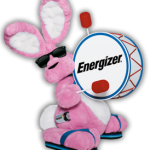 If you’re thinking about starting your own clothing or cheap polo shirts retailer, there are a number of different factors to take into consideration. The physical location of your store, as well as the type, quality, and quantity of products you’ll sell are two crucial decision points for your business. Your brand, marketing, and pricing will have to revolve around the costs that you face as a business owner– you’ll need to price your products so that you turn a profit, but can still compete with other clothing retailers in your niche.
If you’re thinking about starting your own clothing or cheap polo shirts retailer, there are a number of different factors to take into consideration. The physical location of your store, as well as the type, quality, and quantity of products you’ll sell are two crucial decision points for your business. Your brand, marketing, and pricing will have to revolve around the costs that you face as a business owner– you’ll need to price your products so that you turn a profit, but can still compete with other clothing retailers in your niche.
When stocking your shop, it’s important to find wholesalers to supply your clothing. If you are looking to purchase a particular brand exclusively, try to go through the brand’s company directly. Many brands have specific criteria for retailers to meet in order to qualify for wholesale prices. If you want to sell those products, however, it’s certainly worth your time to see if you meet those requirements– though if you don’t, there are a number of wholesale sites where you can buy certain brands at wholesale prices.
 But beyond just merchandise, it’s important for your shop to have its own brand or identity, something that sets it apart in the mind of the customers. You want something that’s memorable, so that customers will recall your shop when they’re looking for something specific– the way that many people think of pink bunnies when trying to decide what battery to buy. Remember, your brand is your personality. When constructing a brand, consider the feelings you want your customers to have when they are thinking of and interacting with your brand. This feeling is communicated through your company’s logo and slogan, the visual elements of your shop, and of course the merchandise in your shop. It’s important to make your brand memorable and relatable, so be sure that you read up on designing your brand.
But beyond just merchandise, it’s important for your shop to have its own brand or identity, something that sets it apart in the mind of the customers. You want something that’s memorable, so that customers will recall your shop when they’re looking for something specific– the way that many people think of pink bunnies when trying to decide what battery to buy. Remember, your brand is your personality. When constructing a brand, consider the feelings you want your customers to have when they are thinking of and interacting with your brand. This feeling is communicated through your company’s logo and slogan, the visual elements of your shop, and of course the merchandise in your shop. It’s important to make your brand memorable and relatable, so be sure that you read up on designing your brand.
It’s also important to decide whether your shop will be physical, such as a brick and mortar shop or a pop-up shop, or purely web-based. We’ve got an entire article detailing the strengths and weaknesses of each, which we recommend you check out. Lastly, when you’re setting up shop, do some research. Make sure there’s a market for your products and that you can compete. If possible, try to fill a specific niche– for example, “sustainable women’s underwear.” Finding a niche and marketing to it will help you build a loyal customer base, which is key to the success of any business.
